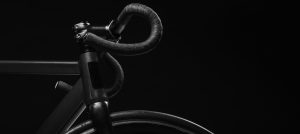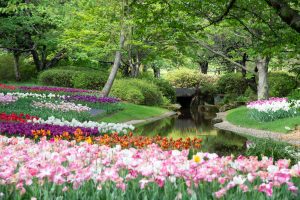
We often carry heavy burdens and the world around us can sometimes leave us feeling more anxious than loving or peaceful. Having a place to find rest, to connect with God and with the truest and deepest parts of ourselves, and practice Jesus’ way of love gives us the strength we need for the journey God has for each of us.
No matter who you are, or where you are on the journey of faith, God welcomes you and loves you. And so does St Aidan’s, Camano Island!
The Rev. Drew Foisie, Rector
8:00 AM – Holy Eucharist Rite I
10:00 AM – Holy Eucharist Rite II
9:15 AM – Education Hour in the Nave
Child Care 9:15 – 11:15 AM
Join us for coffee hour after the 10:00 AM service.
Wednesday Morning service:
Holy Eucharist, Rite I, 10:00 AM
Intercessory prayer and anointing available
A world reconciled by the love and peace of Jesus Christ.
St Aidan’s Mission is about Loving God, Transforming Lives, and Serving Others.
We believe that regular worship (Holy Eucharist, communal confession, prayer and praise) are central to nourishing the whole person, central to being transformed and empowered to serve our neighbors, our wider community and the world.
We believe that love practiced in the way of Jesus transforms lives (our own and others); and we are committed to fostering a self-aware and truthful, life-giving and loving spiritual home for all.
We believe that our worshiping community is stronger when we discover one another’s God-given gifts and abilities, affirm them, and use them in love to serve others in Christ’s name.

Aidan was a 7th century Celtic saint from Ireland, Scotland, and later Northumbria. He was trained as a monk and disciple of Jesus under saint Columba at the island monastery of Iona in Scotland.
After Northumbria fell to the pagan kings Penda and Cadwalla in the early seventh century Christianity began to be systematically stamped out in the region. However, in 633 AD the previously defeated king’s nephew, Oswald, retook the land. As his army faced off against theirs at Hadrian’s Wall at Heavenfield, Oswald lifted high a large, wood cross and under its shadow his army prayed for God’s help. Oswald had a vision of victory, and the next day they saw it come to pass.
Immediately Oswald sought to restore the light of Christ to the land by sending for a missionary from Iona. The first mission of Corman failed, and returned to Iona complaining about those “obstinate, barbarous people.” Upon hearing this, one man’s heart was stirred and moved with compassion for Northumbria. Aidan left Iona and planted his monastery on Holy Island (Lindisfarne), and used it as a center of prayer from which to strike out on foot to preach Christ’s love to all the people of the land.
The above picture is a sculpture of Aidan carrying the torch of the Gospel. Similar to saint Aidan’s original church, St Aidan’s Episcopal Church is situated on an island. And like Saint Aidan we are called to carry the light of the Gospel to the people God has given us to serve. May the Lord who has given us the will to do this ministry give us the grace and power to perform it.

St Aidan’s Mission held its first service on August 2, 1959. The service was conducted by the Venerable Walter McNeil in the West Stanwood Town Hall. There were 51 present and 42 received Communion. On September 6th of that year, the congregation moved into the Ladies’ Aid Hall at Utsalady, Camano Island.
St. Aidan’s Mission held its first service on August 2, 1959. The service was conducted by the Venerable Walter McNeil in the West Stanwood Town Hall. There were 51 present and 42 received Communion. On September 6th of that year, the congregation moved into the Ladies’ Aid Hall at Utsalady, Camano Island.
During the period from 1960 to 1964, land was purchased and paid for in full by sponsoring dinners, bazaars and bake sales. Three fabricated buildings were purchased and installed. These became the nave, sanctuary, sacristy and office. The original church library, established in 1962, contained precisely two volumes: Pastors, Vestries, and Parishes and The Worship of the Church.
A much-traveled bell from Great Northern Railway came to rest at St. Aidan’s in 1965. In 1974 a parish hall and small kitchen were added. Siri Swenson, a member of the congregation and talented woodcarver, carved 26 works for St. Aidan’s including the nave doors. In 1981 additions were built on both sides of the nave to form side aisles. In 1994 a small space was added to house organ pipes and blower and in 1999 the Narthex was rebuilt. Two other buildings were subsequently remodeled.
Shortly after its founding, St. Aidan’s became part of the diocesan Stillaguamish Mission Field which included St. Philips, Marysville and St. Matthew’s, the ‘home church’ in Arlington as well as Darrington, Rockport and Newhalem. The Rev. Tom Dobson along with the Rev. George Wilson cared for the congregations. In 1968, the Rev. Walter Correll became St. Aidan’s first full-time vicar. After Fr. Correll’s retirement in 1978, the Rev. William (Bill) Riker served as interim. This was a time of change for the Church. Fr. Riker was young and welltrained in the new liturgy and while he was there the altar was moved out from the wall and new 1979 prayer books ordered. The first woman lector was appointed, women were included on the Search Committee and the junior warden was a woman.
The Rev. Colin Campbell became vicar in 1979 and during his tenure the mortgage on the building was paid off. During that period a prayer group called the St. Aidan Bedeswomen was formed and began a prayer chain which has functioned ever since. A Bible study class was also established and in 2004 the Education For Ministry (EFM) series began.
The Rev. Guy Sherman became vicar in 1988 and under his leadership, the liturgy and music at St. Aidan’s advanced in both appreciation and application. The Rev. Charles Forbes served as interim upon Fr. Sherman’s departure in 1998 and while at St. Aidan’s moved the Sunday school children into the service as oblators and missal-bearers.
When the Rev. Robert Dietel arrived as vicar in 1999 he found a dedicated, hard working and steadily growing congregation looking forward to the day when a new church building could be constructed. That day finally came on April 16, 2006 when ground breaking took place with Bishop Bavi Edna (Nedi) Rivera memorably seated at the controls of a giant backhoe! The first service in the new worship space was a wedding on February 27, 2007 followed by the dedication of the building in May with Bishop Rivera as celebrant. A third celebration took place in July, again with Bishop Rivera as inspiration. She had invited the Rt. Rev. Michael B. Curry of North Carolina to do a preaching tour in the Diocese and the opening service was held at St. Aidan’s in a giant tent on the north lawn with over 400 people in attendance.
Life at St. Aidan’s continued to thrive and with more available space. The congregation could provide even more in the way of outreach to the community. By the beginning of 2008, St. Aidan’s was hosting six twelve-step programs such as AA and AlAnon as well as a variety of other community groups. In August 2009, St. Aidan’s celebrated 50 years of growth and contribution to the communities of Camano Island and Stanwood offering “a place to come and worship God, and to praise his Holy Name, hear His Holy Word, and to ask for ourselves and others those things which are necessary for our life and our salvation.”
Moving Forward: In the archives of St. Aidan’s Episcopal Church are several small blue cloth binders. Their neatly typed and hand-lettered pages contain the bishop’s committee minutes and correspondence for the early years of this congregation. They chronicle the tough times of hard-working and determined people whose ministry and outreach and irrepressible good humor amidst adversity was amazing. Occasionally one may spot a page that lists that year’s 20 or 30 projects neatly divided up amongst just 20 or 30 people.
Times have changed a bit at St. Aidan’s – now it’s more like 60 or 70 projects and ministries being conducted by more than 100 people. Back then, St. Aidan’s was the “little brown church in the wildwood” – so well hidden from the highway that several bishops bemoaned us as being the most difficult church in the diocese to find. That wildwood is long gone, sold to help the building fund. Along with a lighted sign, the old railroad bell and the flagpole are perhaps the first things one sees, instead of all that dark third-growth timber. There is a brand new porch complemented by the Trinity garden and the gently curving exposed aggregate sidewalk. The three buildings that held the church and parish hall are still here but in dramatically remodeled form. The original church now houses the parish hall, coffee bar and kitchen and the original parish hall built in 1974 has become a multipurpose area used by the Sunday School and choir.
Yes, times have changed a bit at St. Aidan’s – it’s a far cry from those early days of borrowing the Ladies Aid Hall at Utsalady for Sunday services, all the while raising money from dozens of dinners, bazaars and bake sales to build a church. St. Aidan’s very first service in August 1959 attracted 51 people. The average Sunday attendance in August of 1999 was 49 and our average Sunday attendance at last count this year (2013) was 104. The tenure of the Rev. Robert Dietel has been longer than that of any previous vicar, and coupled with his leadership this mission church has changed remarkably in the past fifteen years.





